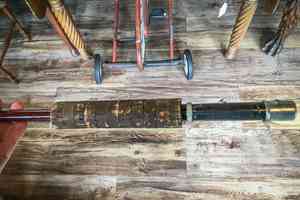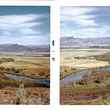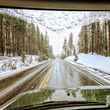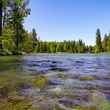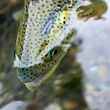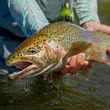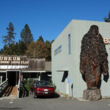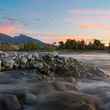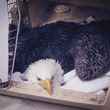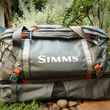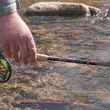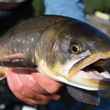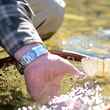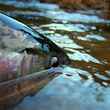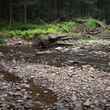It's 18 degrees. The mid-thirty degree temperatures that were forecasted to offer relief from the previous day spent in the teens and twenties are hours away, if they show at all. The wind has picked up and the morning sun is hiding behind the hillside, refusing to arrive and offer even the most minor respite from the biting cold.
The feeling in my fingers is gone. I'm having trouble pinching the running line against the cork handle of my spey rod and when I sweep the set anchor, the line slips through my hands and and the head and sink tip fall limply to the water in front of me. As I dejectedly look down at my lifeless digits, I notice that two of them are encrusted with ice. I lament, again, not bringing my gloves. I've never been able to fish effectively with gloves, due to the lack of dexterity they present when handling line. But, paralyzed hands are even less useful than fabric-clad ones, leaving me wishing for the warmth.
I try again, with better results. The anchor is set in place and despite the cold and my rustiness, I load the rod well and it launches the head forward. Thirty or so feet along its trajectory, the line bucks to a halt and falls awkwardly to the river's surface. Ice sheathing the rod's largest stripping guide has captured the thin running line that traverses its center, pinching the line and refusing to allow it to move.
